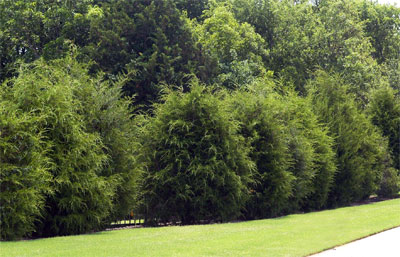Eastern Redcedars in Landscaping

Looking for a dense evergreen screen? You won’t have to look far. Eastern redcedars (Juniperus virginiana) are large trees that adorn Texas’ hillsides and prairies. And, they’re looking especially good in this year of heat and drought. Where Leyland cypresses have fallen like flies, most established redcedars have survived all the stresses.
If you’re wanting your screen in any type of a row, give redcedars at least 20 feet between plants. Closer plantings will result in crowded trees that will lose lower branches after 10 or 20 years.
Smaller plants transplant most readily. If you’re digging plants from nature, your temptation will be to choose the largest ones possible, but the mortality rate on those big specimens is quite high, and the plants can be slow to get started. You’re much better off moving knee-high plants. They cost far less. They take hold right away, and they grow very rapidly.
Hand-water your new redcedars regularly for their first year or two in your landscape. By the summer, they may need water every 4 or 5 days. However, after they’re established, they’ll be able to go weeks between waterings.
Finally, to help dispel a couple of concerns: if someone you know is bothered by "mountain cedar" pollen, this plant is the culprit. However, planting a screen of them on rural property isn’t going to add that much extra pollen to the air. There’s already plenty of pollen to bother folks who struggle with allergies, whether you plant them or not. They need to be seeing the allergist. Help is available.
Second, bagworms can be an issue, but they’re easily controlled if and when they do show up. Any general-purpose insecticide will eliminate them if it’s applied while they’re small and actively feeding. That’s late May or June in most parts of Texas.
